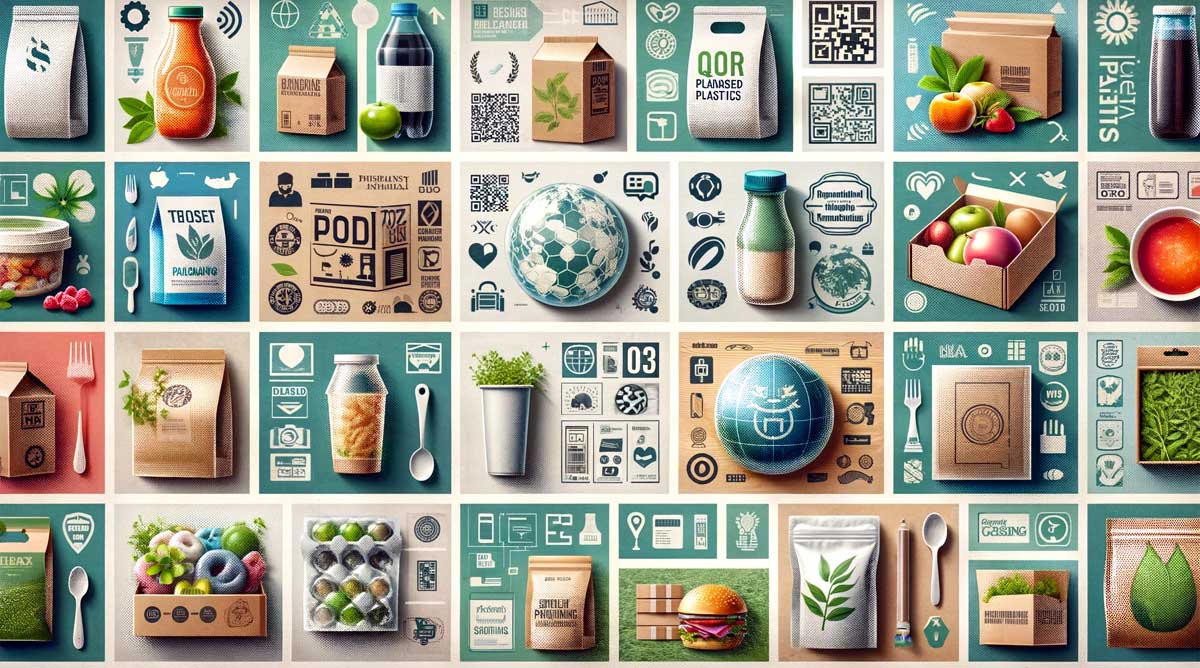The landscape of food packaging is rapidly evolving, driven by technological advancements, consumer preferences, and environmental concerns. Below we’ve gathered some of the top trends shaping the food packaging industry:
- Sustainability and Eco-friendliness: A surge in demand for environmentally responsible packaging has led to the development of biodegradable materials, recyclable and compostable options, and waste-minimizing designs. Innovations in this area include plant-based plastics and edible packaging.
- Smart Packaging Technologies: The integration of QR codes, RFID tags, and smart labels into packaging is transforming how we track, interact with, and provide information about products. These technologies enhance traceability, facilitate better inventory management, and provide dynamic consumer engagement.
- Minimalist and Transparent Design: Today’s consumers are drawn to simplicity and transparency. Packaging that uses straightforward, clear designs not only appeals to this preference but often aligns with sustainability goals by using fewer materials.
- Personalization and Customization: Advances in digital printing have enabled the production of personalized and custom packaging, even in small batches. This trend caters to niche markets and allows for unique marketing opportunities through limited edition packaging.
- Safety and Hygiene: In response to global health concerns, there’s an increased focus on packaging that promotes safety and hygiene. Features like tamper-evident seals and antimicrobial materials are becoming more prevalent.
- Regulatory Compliance: Adhering to changing regulations regarding packaging materials, especially in terms of environmental impact, is more crucial than ever for businesses in the food industry.
- Supply Chain Efficiency: Optimizing packaging for logistics and storage is a key trend. This includes designs that reduce transportation costs and improve the carbon footprint of products.
- Consumer Convenience: The push for user-friendly packaging continues, with an emphasis on features like resealable closures and single-serve formats.
- Cost-effectiveness vs. Premiumization: While maintaining cost-effective packaging solutions is essential, there’s also a growing interest in premium packaging for luxury or artisanal products, which can significantly enhance brand value.
- Innovative Material Use: The exploration of new materials for packaging, such as algae-based plastics or mushroom-based packing materials, reflects a combination of sustainability goals and technological innovation.

